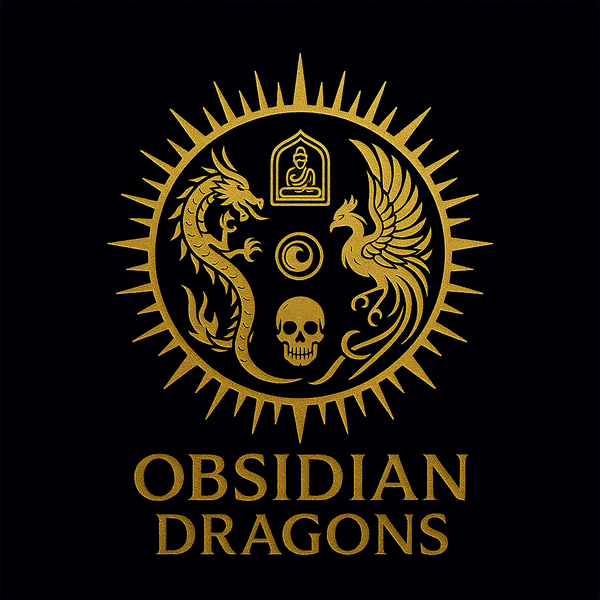PS
Ghau, Tibetan Buddhist pendant amulet, protective Buddha according to his zodiac sign, choice of rat, dragon, snake or buffalo
Ghau, Tibetan Buddhist pendant amulet, protective Buddha according to his zodiac sign, choice of rat, dragon, snake or buffalo
Couldn't load pickup availability
Ghau, Tibetan Buddhist pendant amulet, protective Buddha according to his zodiac sign, choice of rat, dragon, buffalo snake or tiger on this page
Rooster or sheep or monkey available here
It is traditional culture to give a protective Buddha according to
his Chinese zodiac sign.
Genuine Traditional Tangka Regong The tangka is painted at Longwu Temple,
also called Wutun.
Tibetan Lamasery located in Rebkong Tibetan Prefecture, Province of
the Amdo, called Huangnan in the province of Qinghai in China and is located at 186
km from Xining.
Renowned center for Tibetan thangka painting. The Regong arts have been
inscribed in 2009 on the representative list of intangible cultural heritage
of humanity. The colors of this tangka are made up of pure gold and minerals
crushed. The case closing the tangka is made of 925 silver and bronze
The reverse depicts the mantra of compassion "om mani padme hum" rotating
thanks to a ball bearing system developed in Germany.
Dimension of the pendant 57mm high by 38mm wide weight of 33 grams Delivered
with a handcrafted Tibetan braided cord about 34cm long
The protective windows are made of leuco sapphire like high-end watches.
range.
Delivered in a high-end case as shown in the video
1) BODHISATTVA GUAN YIN SIGN OF THE RAT
Bodhisattva Avalokiteshvara (Hindi अवलोकितेश्वर Avalokiteśvara “lord who
watch from above”, Chinese 觀世音 Guānshìyīn or 觀音 Guānyīn, Shanghainese
Kueu(sy)'in, Korean Gwanseeum 관세음, Japanese 観音 Kan'non, Tibetan Chenrezig,
Vietnamese Quán Thế Âm, Indonesian Kwan Im, Khmer លោកេស្វរ Lokesvara), is without
doubt the most revered and popular great bodhisattva among the
Buddhists of the Great Vehicle. He is also used as a yidam (deity
tutelary) in tantric meditations. Protean Bodhisattva and
syncretic (he can represent all the other bodhisattvas), embodying the
ultimate compassion, it can be feminine in China, Korea, Japan and
Vietnam, in the form of Quan Yin. He is considered the protector of Tibet
where King Songtsen Gampo and later the Dalai Lamas are seen as his
fumes. This is also the case with other tulku such as the karmapa.
Also called Padmapāṇi or Maṇipadmā, he is invoked by the famous mantra Om̐
Maṇipadme hūm (ॐमणिपद्मेहूम्). Chenrezi is the bodhisattva of love and
compassion.
The aim of Chenrezi puja is to develop friendship full of love and
compassion for all living beings without distinction. Chenrezi
manifested in different forms: the Chenrezi with 10 heads and 1000 arms of the
compassion is the best known: he promised his spiritual father, the Buddha
Amitabha, to expend all his energy to liberate all living beings and
not to rest until all living beings are delivered from
their suffering. Should he ever doubt his mission, 'then may my
head to fragment into ten and my body into 1000'. When, after meditating on
profound manner and reciting the Mani Mantra continuously, he saw that
the ocean of suffering had still not emptied, so he fell into a
deep despair and broke his head in 10 and his body in 1000. The six mantra
syllables OM MANI PEME HOENG is the best known mantra of Tibetan Buddhism.
2) BODHISATTVA SAMANTABHADRA SIGN OF THE DRAGON AND SNAKE
Protector of people born under the sign of the dragon and the serpent Samantabhadra,
whose name in Sanskrit means universal dignity, is a bodhisattva of
Mahayana, or great vehicle. Associated with dhyana, meditation,
he forms a triad with the Buddha Siddartha Gautama and the bodhisattva
Manjushri. Dignitary of the Lotus Sutra, and according to the Avatamsaka Sutra,
Samantabhadra made the Ten Great Bodhisattva Vows 1. Pay homage and
respect to all buddhas. 2. praising the Thus Come One the Tathagata (Buddha) 3.
Make abundant offerings. 4. Repent of wrongdoings and bad karmas
. 5. Rejoicing in the merits and virtues of others. 6. Ask the Buddhas
to continue teaching. 7. ask the Buddhas to remain in the world. 8.
Follow the teachings of the Buddhas at all times. 9. welcome and enjoy
all living beings. 10. To transfer all merits and virtues for the benefit of
all beings.
Known in Chinese Buddhism as Puxian, he is associated with
action, while Manjushri is associated with transcendent wisdom or prajna.
Responding to the name of Fugen in Japan, Samantabhadra is the subject of a cult
important in the Tendai and True Word currents.
Considered the adhi-buddha (Primordial Buddha) in the Nyinqma stream of
Tibetan Buddhism, it is often represented there in Yab-Yum, or union
indivisible male female with his consort or paredra Samantabhadri. Dzongsar
Khyentse Rinpoche following the Nyingmapa Dzogchen tradition qualifies nature and
the essence of Samantabhadra, the Primordial Buddha, as the source without origin
timeless and limitless Atiyoga teachings, and honors the point of view
contradictory maintained by certain parties arguing that the teachings
Dzogchen originated from the Bonpo tradition
Or from the Chinese monk Moheyan: “Samantabhadra is not subject to limits of
time, place or physical conditions. Samantabhadra is not a being
colorful two-eyed. Samantabhadra is the unity of consciousness and emptiness,
the unity of appearances and emptiness, the nature of mind, clarity
natural with unrelenting compassion - it's been Samantabhadra from the start.“
Unlike his more popular counterpart Mañjuśrī, Samantabhadra is only
rarely depicted alone and is usually found in a trinity on the side
right of Shakyamuni, mounted on a six-tusked white elephant. In these
traditions that accept the Avatamsaka Sutra as its fundamental instruction,
Samantabhadra and Manjusri flank the Vairocana Buddha, the central Buddha of
this particular sutra.
He is sometimes shown in Chinese art with feminine features,
riding an elephant with six pairs of tusks while carrying a ``
parasol ''of lotus leaf (Sanskrit: chatra), wearing a robe and
features similar to some female depictions of Guanyin.
It is in this form that Samantabhadra is worshiped as the bodhisattva
protector of the monasteries associated with Mount Emei in western China in the
Sichuan province, an important place of Buddhist pilgrimage. Some think
that Samantabhadra's white elephant mount was the same elephant that is
appeared to Queen Maya, the Buddha's mother, to announce his birth. THE
Mahayana esoteric traditions treat Samantabhada as one of the Buddhas
"Primordials" (Sanskrit: Dharmakaya), but the main primordial Buddha is
considered Vairocana.
The people of Sri Lanka revere Samantabhadra Bodhisattva as Saman (also
called Sumana, Samantha, Sumana Saman). The name Saman means "the rising sun
morning". The god Saman is considered one of the guardian deities of
the island as well as a protector of Buddhism. Its main shrine is
located in Ratnapura, where an annual festival is held in his honor.
3) BODHISATTVA AKASHAGARBHA SIGN OF THE BUFFALO or TIGER
Akashagarbha is the protector of people born under the sign of the Ox and the Tiger.
He is one of the Eight Great Bodhisattvas of Vajrayana. and one of thirteen
Buddhas of the Japanese Shingon tantric school. His name is formed from ākāśa, "
unlimited space”, and from garbha, “matrix”. invoked to develop the
wisdom. His cult has been maintained mainly in Japan.
Ākāśagarbha represents the essence of ether and belongs on the mandalas to the
ratna (jewel) family. According to the Akashagarbha Sutra, it is prayed towards the east
while waiting for the dawn (aruņa) which is its manifestation. It is also said that the moon,
the sun and the stars are its manifestations.
Given that part of his name may have the meaning of "sky", some
proposed to see a celestial or stellar deity at the origin of the
bodhisattva. This bodhisattva is associated with a memory enhancement ritual
described in the Bodhisattva Ākāśagarbha Sutra which was introduced in Japan
during the Nara period (645-794). Even today, many people
recite his mantra in the hope of revitalizing a failing memory.
On the island of Honshu, children used to pay homage to Kokuzo
on their thirteenth birthday to seek the improvement of their abilities
intellectual. Ākāśagarbha is also prayed for manual skill; he
is considered the patron saint of craftsmen.
Apart from its utilitarian aspects, Kokûzô's mantra also has an effect
witty. It is recited to develop wisdom. Kukai, founder of
Shingon Buddhism, made several times his particular asceticism, "Goumanji"
100 day ritual of repeating the mantra a million times in
isolation.
At the end of the 10th, it is said that the star of dawn, symbolized by the
bodhisattva, descended to merge with him, bringing him enlightenment. Last
on the list of Thirteen Buddhas of the True Word stream, Ākāśagarbha also closes the
cycle of funeral rituals by presiding over the last commemorative ceremony 32
years after death. Ākāśagarbha also has some importance in the
Nichiren Buddhism.
The Seicho-ji (Kiyosumi-dera), temple where the founder of the current studied, was
built around a statue of this bodhisattva. According to the Gosho, a collection of his
writings, Nichiren saw one day Kokuzo appear in front of him then change into a
old monk who gave him a pearl of wisdom.
MANTRA OF COMPASSION "OM MANI PADME HUM"
According to Tibetan Buddhism, reciting the Chenrezi Om Mani mantra
Padme Hum, aloud or inwardly, is an invocation for attention
benevolent and powerful of Chenrezig, the expression of the compassion of the
Buddha. Seeing the written mantra can have the same effect, it is for
that we find it in clearly visible places, even engraved in the
rock. He can also be summoned using prayer wheels on
which the mantra is inscribed, sometimes thousands of times. It exists
different formats of prayer wheels: there are those that can be transported
with you and spin with one hand, and there are others who are so
large and so heavy that several people are needed to turn them. According
Tibetan Buddhist monks, the mantra Om Mani Padme Hum (Hung) unites at
alone all of the Buddha's teachings.
Each syllable closes a door to reincarnation:
OM: Closes the door to the world of the Devas (gods).
MA: Close the door to the world of the asuras (demi-gods).
NI: Close the door to the human world.
PAD: Close the door to the animal world.
ME: Close the door to the world of pretas ("greedy spirits").
HUNG: Shut the gate to hell. Each syllable purifies a veil:
OM: purifies the veil of the body.
MA: purifies the veil of speech.
NI: purifies the veil of the mind.
PAD: purifies the veil of contradictory emotions.
ME: purifies the veil of substantial existence.
HUNG: purifies the veil that covers knowledge.
Each syllable is a mantra in itself:
OM: for the body of the Buddhas.
MA: for the words of the Buddhas.
NI: for the spirit of the Buddhas.
PAD: for the virtues of the Buddhas.
ME: for the accomplishments of the Buddhas.
HUNG: for the grace of body, speech, mind, virtue and all
the accomplishments of the Buddhas.
Each syllable corresponds to one of the six paradigms or refinements
transcendental:
OM: generosity.
MA: ethics.
NI: tolerance.
PAD: perseverance.
ME: concentration.
HUNG: discernment.
Each syllable is also connected to a Buddha:
OM: Ratnasambhava.
MA: Amaoghasiddi.
NI: Vajradhara
PAD: Vairocana.
ME: Amitabha.
HUNG: Akshobya.
Each syllable of the mantra purifies us of a defect:
OM: pride.
MA: the desire / the desire to have fun.
NI: passionate desire.
PAD: stupidity / prejudice.
ME: poverty / possessiveness.
HUNG: aggression / hatred.
Finally, each syllable corresponds to one of the six wisdoms:
OM: the wisdom of stability.
MA: all-fulfilling wisdom
NI: wisdom emanates from oneself
PAD: all-embracing wisdom (dharma)
ME: discriminating wisdom
HUNG: mirror-like wisdom.
Share
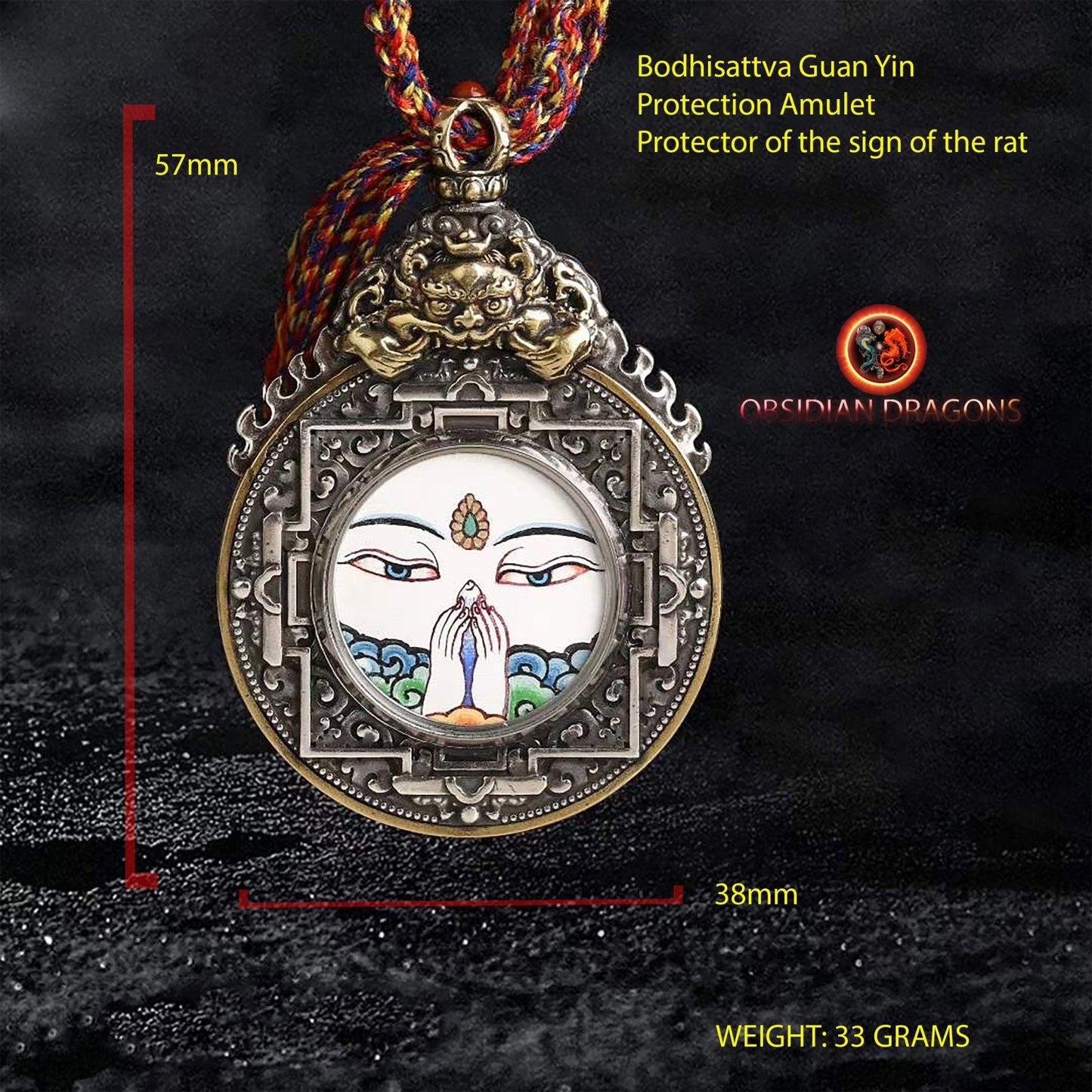
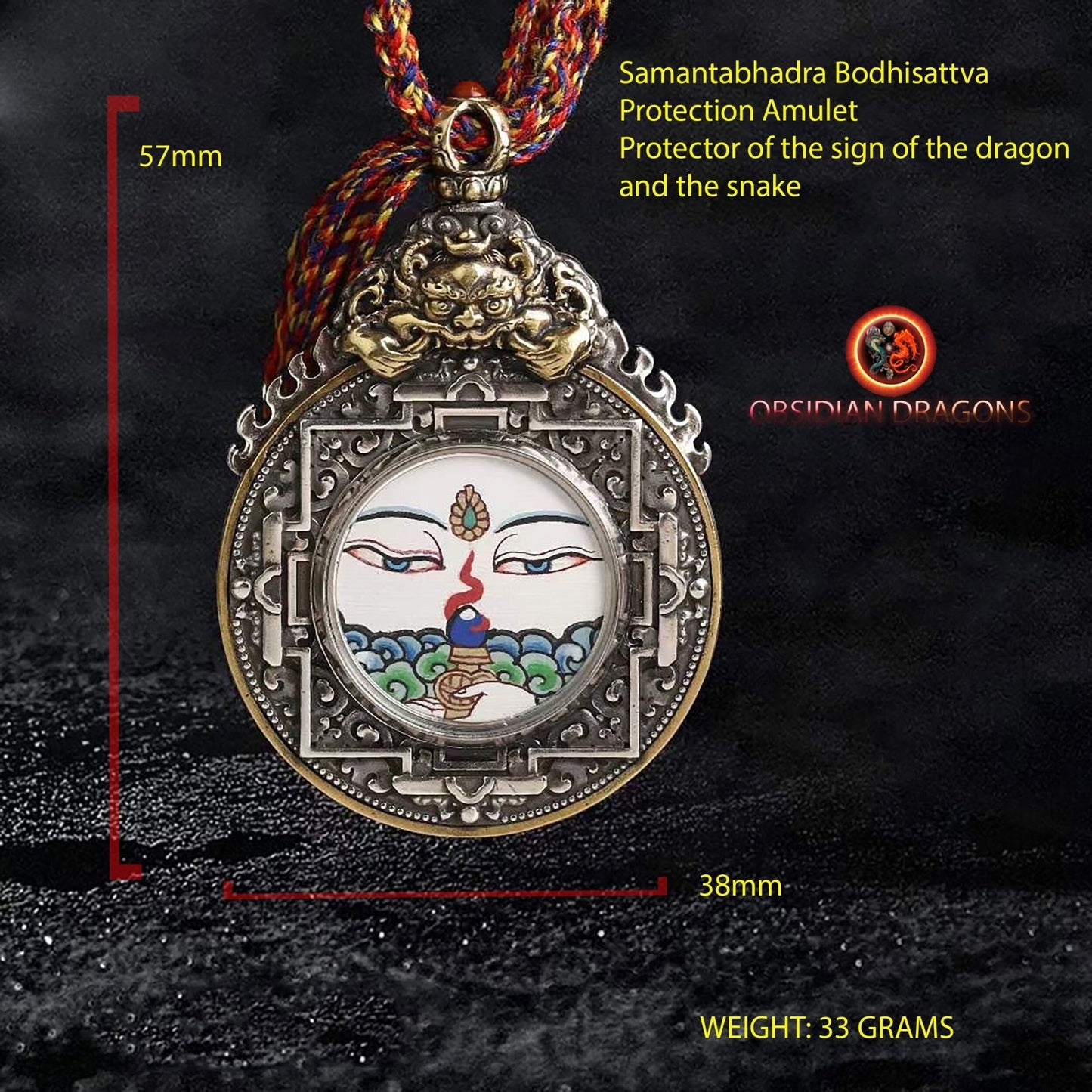
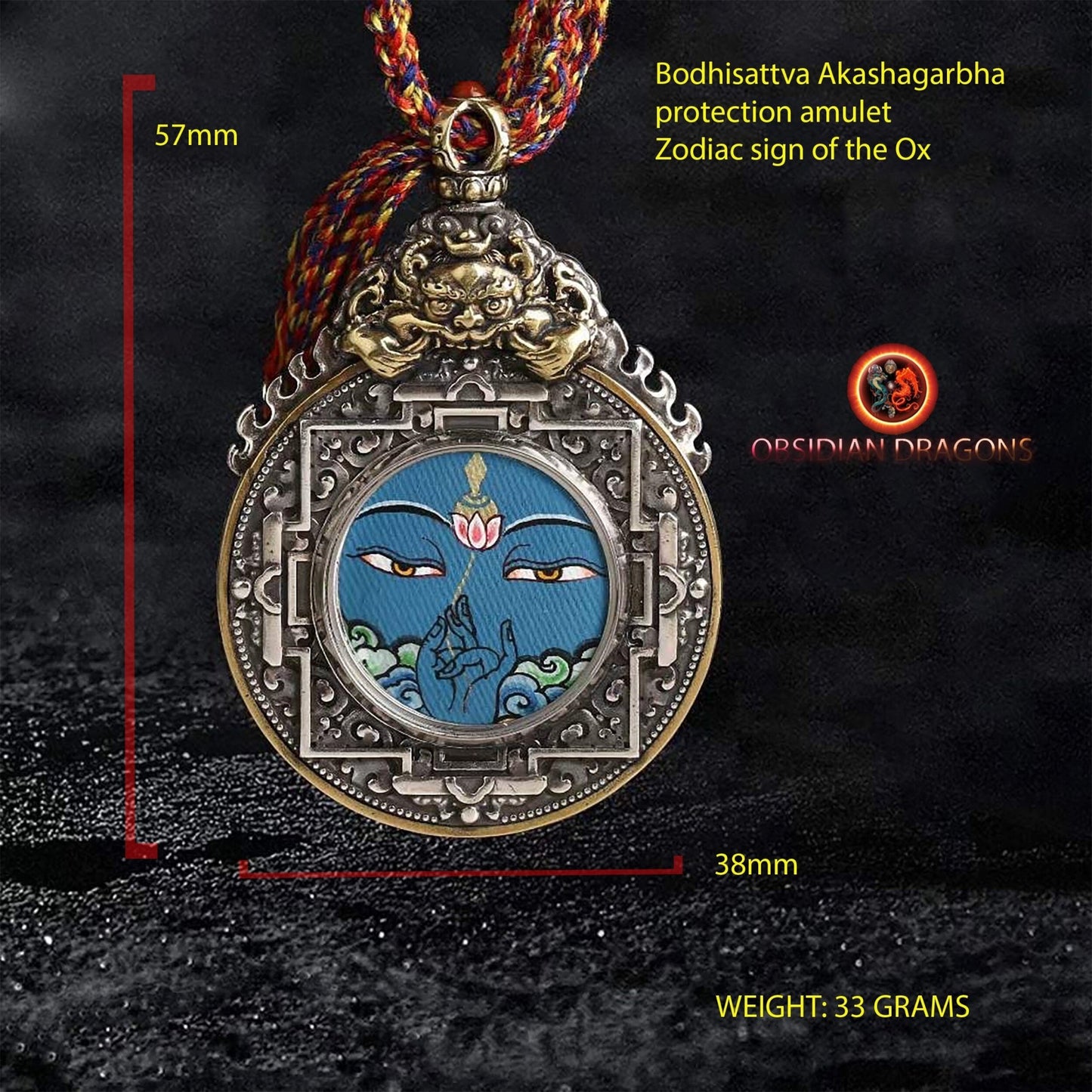
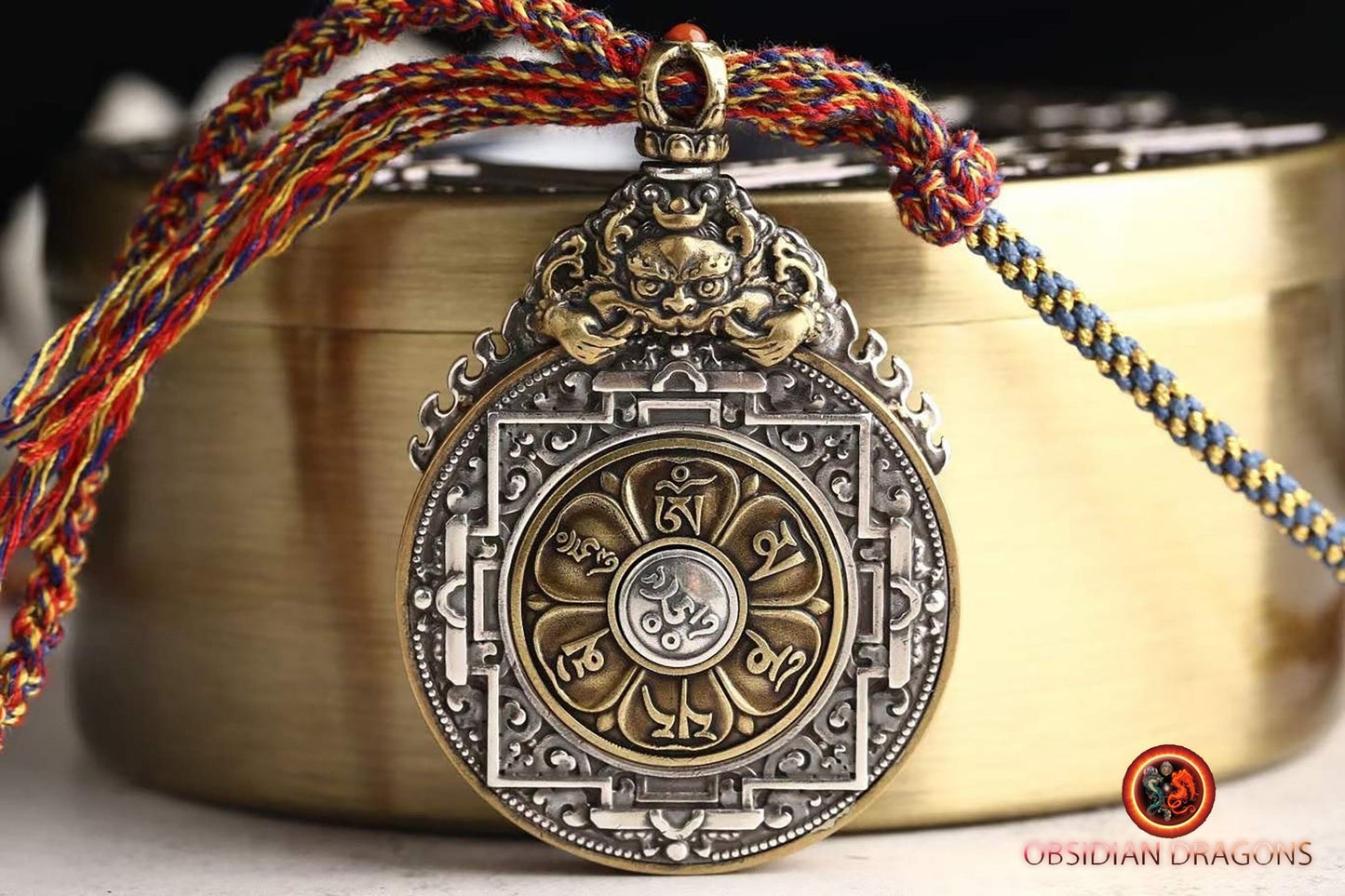
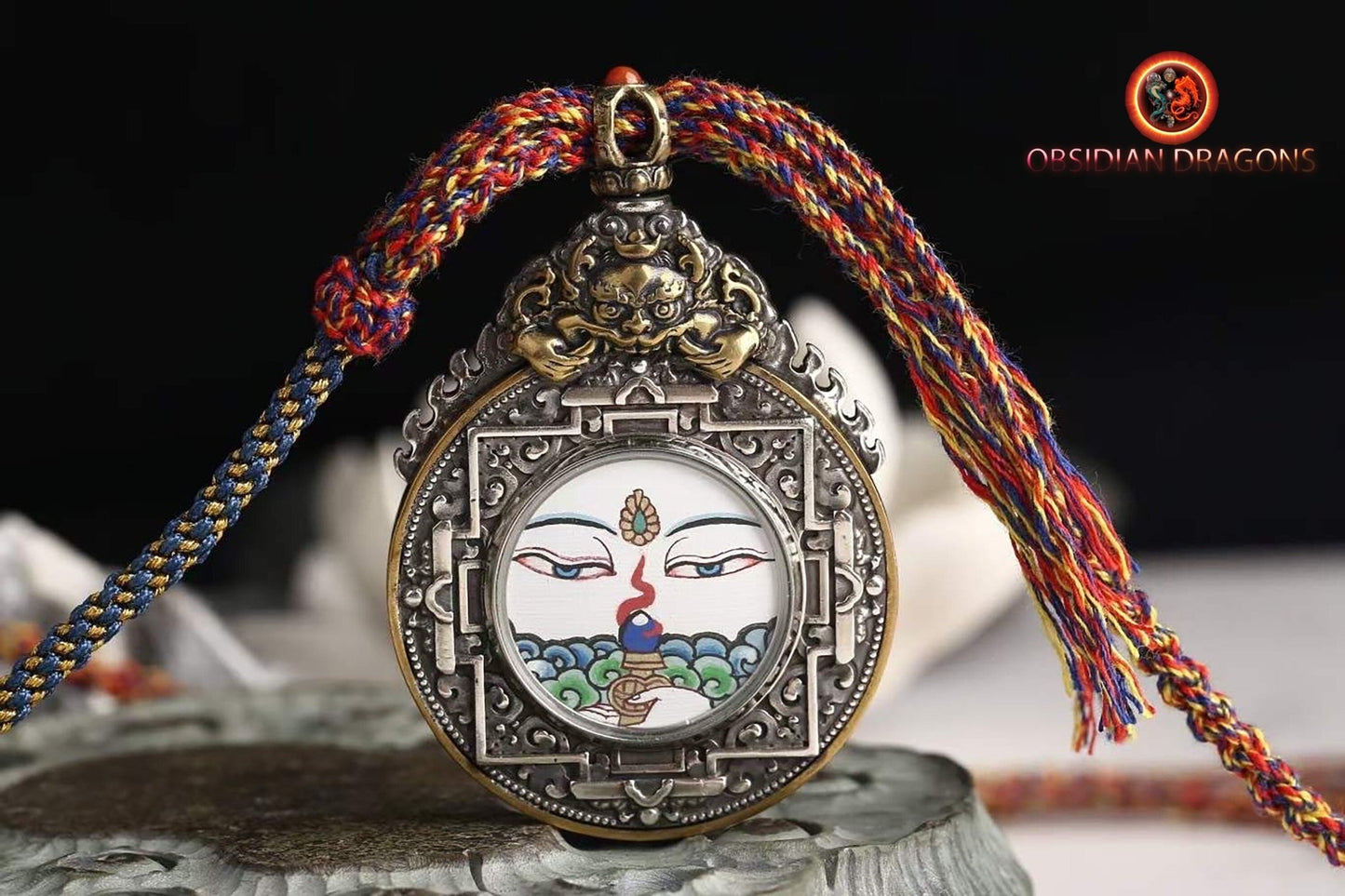
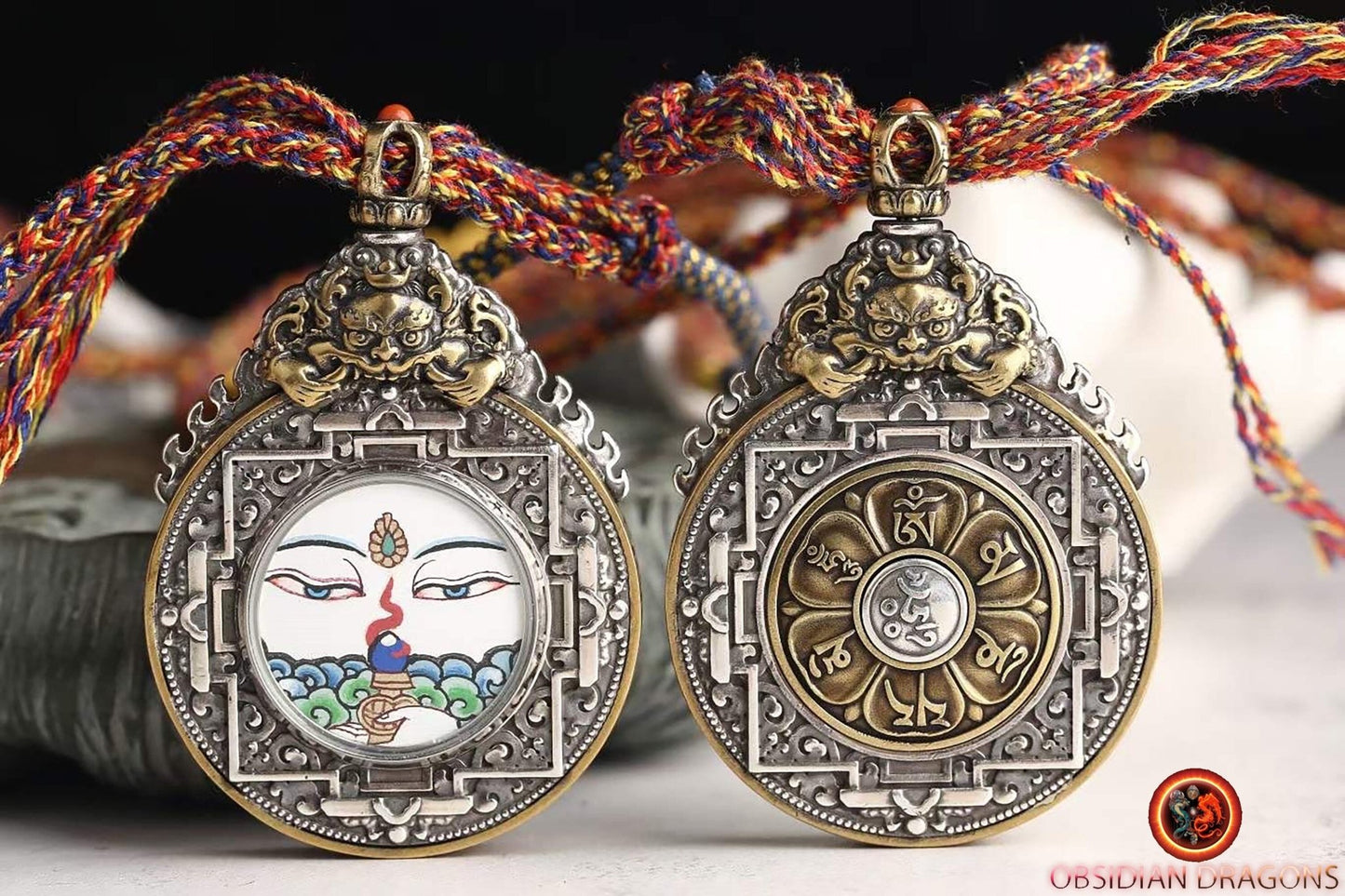
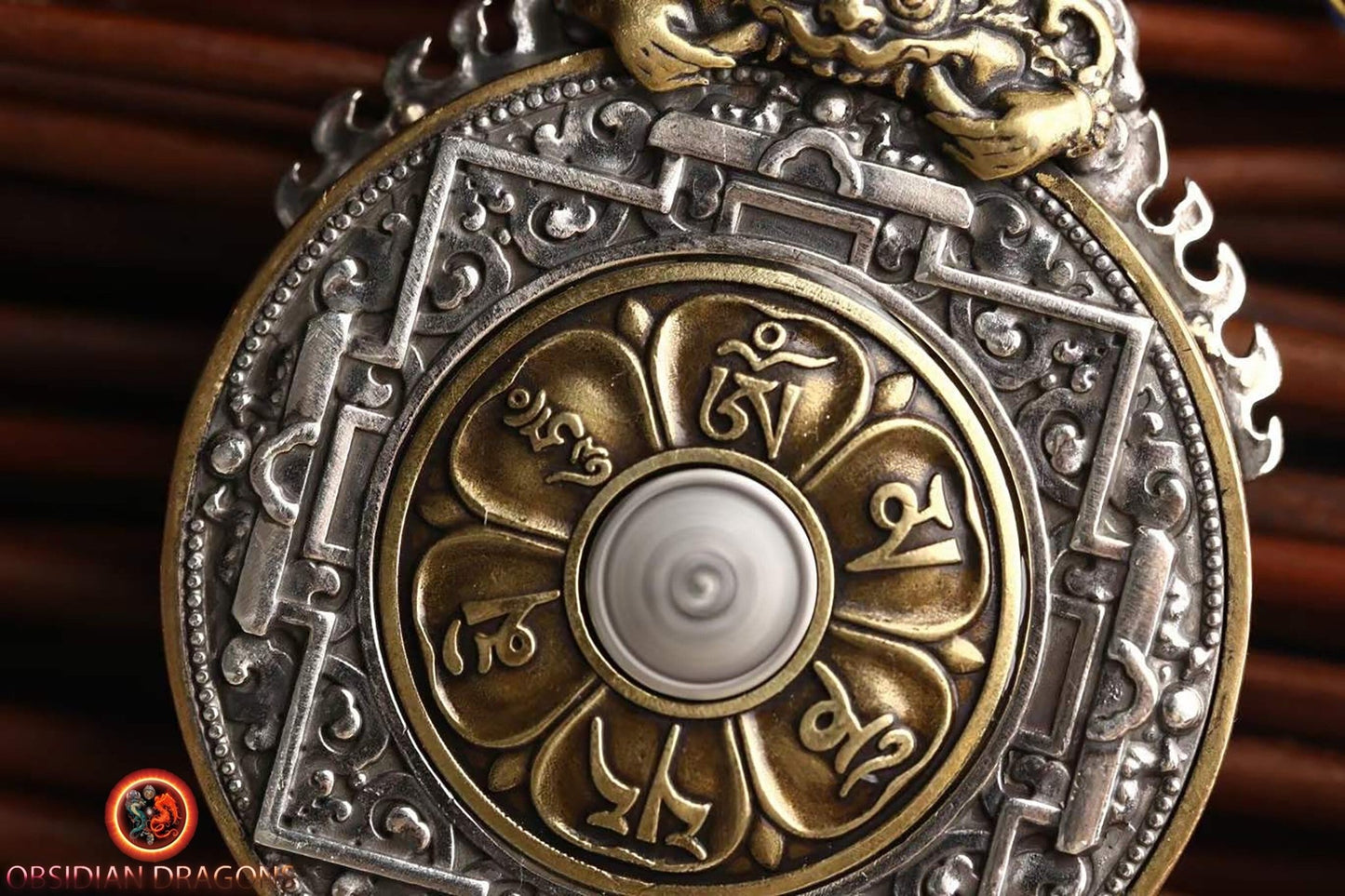
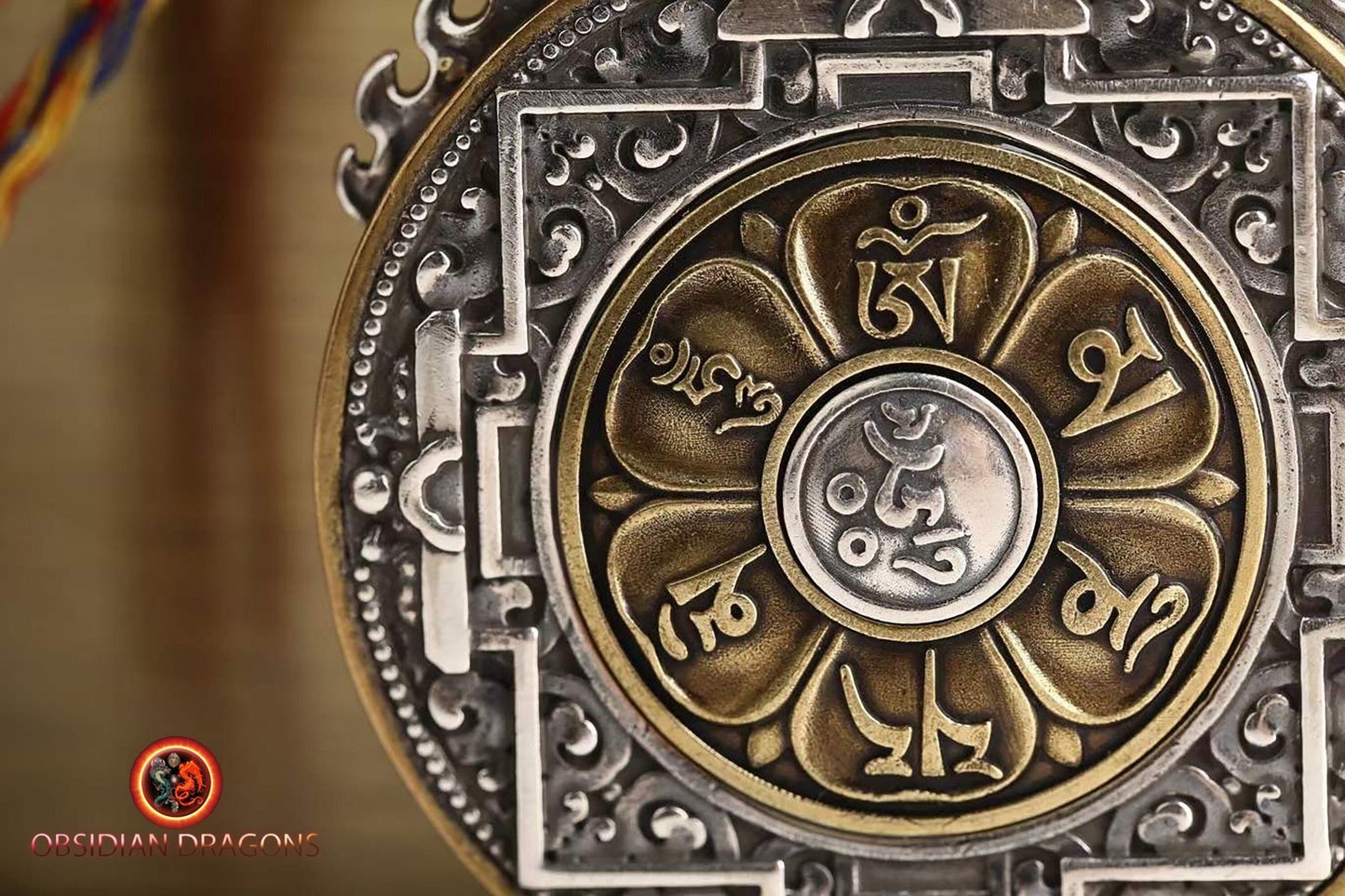
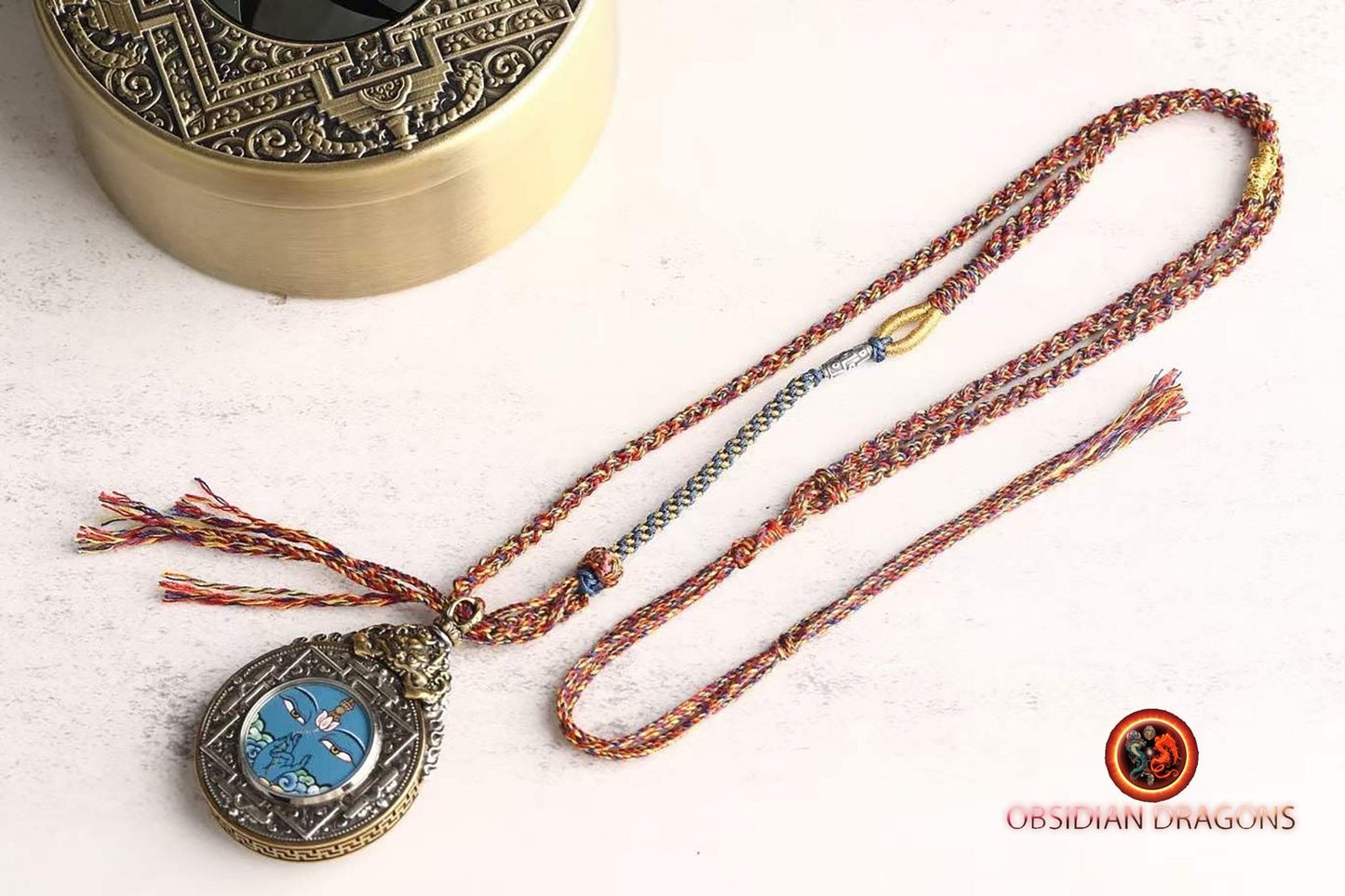
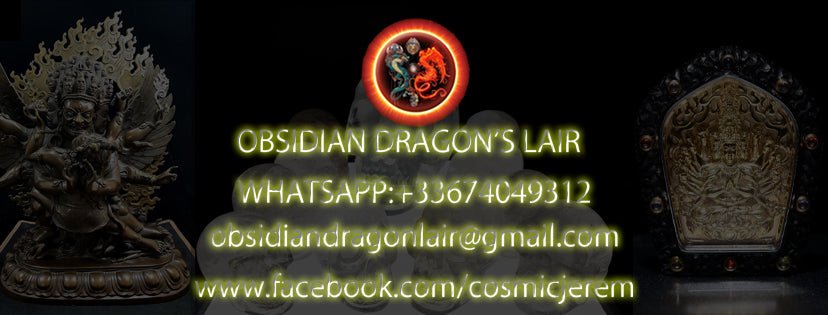

Return conditions for a Zen purchase
We offer you a money back guarantee within 14 days after delivery of your order.
If you are not completely satisfied with your purchase, please contact us to arrange a return of the product and a refund.
Except for returns, shipping is free on all orders.
Multi-column
Button text-
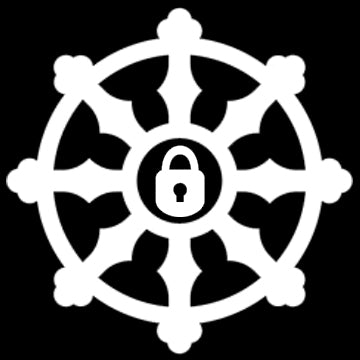
100% secure payment
3 times interest-free option with Scalapay
-

Free delivery in France and internationally
14 days money back guarantee after delivery (see our conditions of sale)
-
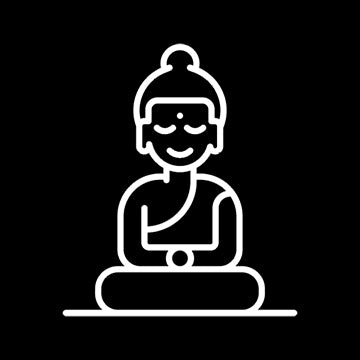
Column
Excellent customer service
Live chat
Whatsapp +33674049312
Let customers speak for us
from 917 reviews4eme pièce que j'achète et encore une fois, jamais déçue de l'unicité et de l'originalité. Coup de cœur pour ce bracelet en magnifiques molaires de mammouth, charge de vie et d'histoire. Attention pour un tout petit poignet de fille comme le mien cela peut être trop grand. N'hésitez pas à poser la question à Jeremy sur les tailles, il répond toujours et il est très réactif.

Déjà j’au été très impressionné par la qualité du site web pour tout chercheur de vérité mais également pour la disponibilité de Jérôme qui a su dépasser mes plus grandes attentes pour la commande sur mesure d’un mala en Obsidienne Œil Céleste – Dragon & Bagua Feng Shui. Gràce à ce puissant talisman je peux désormais continuer ma route sereinement. Un très grand merci sincèrement.

magnifique, puissant et apaisant, il m'aide à garder mon calme je le trouve absolument parfait!

J'ai eu l'occasion de rencontrer Jérémy sur Paris avant l'achat...très bon contact avec lui ..il sait de quoi il parle...je suis revenu vers lui pour l'achat de cette magnifique statue...elle a été emballee avec beaucoup de soin pour une expédition de chine... vraiment très satisfait de cet achat..merci

Pendentif dragon en obsidienne œil céleste - Symbole spirituel

Le collier est superbe, et ce pendentif magnifique, ses détails! et l'odeur du bois de santal que c'est agréable! Qualité extra! Contact excellent avec Jérémy, merci beaucoup pour votre gentillesse! Quelle qualité, vivement le mala !

L'objet est très joli et malgré que je ne sois pas un spécialiste, je trouve que le crystal est beau. Il n'est pas parfait et cela me rassure sur la qualité du produit qui est sensé être naturel donc imparfait.
Très bien emballé et en plus housse de rangement offerte.
MERCI

J’ai commandé un crâne de dragon, il est super beau et très puissant. Je l’adore 😍 Et l’envoi a été très rapide 🤗 merci 🙏🏻

bracelet puissant, je suis content de mon achat

Cet artisan est gémologue, il travaille avec des artisans qui sont des vrais artistes, je suis bluffé par la qualité des ouvrages sur l’argent et sa qualité. Quand à la qualité des pierres pas besoin d’être gémologue pour voir la qualité exceptionnelle des pierres, encore une fois le travail de sculpture est exceptionnel.
Mon mala traditionnel est une pure merveille dans la tradition originelle. Le ghau est une merveille qui me comble.
Bref que dire de plus :). Allez sur son site.
PS : vendeur qui connait son métier et les traditions bouddhistes ce qui est un plus en plus :)

Ce crâne est un Etre de Lumière. Attirant , inspirant , "parlant".
Il est un Ami qui tire mes pensées vers le Haut.
Ses énergies vibrent à des fréquences élevées. Il est puissant dans la douceur.
Un crâne de Dragon m'assite également. Merveilleux !

Très beaux bracelet et très puissants

Magnifique crâne givré de l'Himalaya.

cette chevalière est tres bien réalisé, avec beaucoup de détails, je suis heureux de l'avoir

